nourish reader Clare Norman visited Sitges, a coastal town around 20 miles southwest of the Spanish city of Barcelona.
My husband and I stayed at La Casa del Mar in Sitges for our anniversary last summer and I have to say, it delivered everything we were looking for. We are a family of four, and we were all thrilled with the location, the house, and the local amenities – not to mention the beaches and the food! It really was the most relaxing and incredible holiday home. The views on arrival were breath-taking, with the house itself kept to the highest standards with plenty of linens, towels and comforts to make our stay truly five stars.
We spent two weeks visiting local beaches as well as enjoying the residency and pool and surrounding nature reserve. We were able to explore the local towns of Sitges and Vilanova il la Geltru, as well as visiting all the historical points of interest, local restaurants, and wineries. The weather was very hot in July, but as we like the heat it wasn’t a problem. The sea was absolutely perfect and balmy evenings on the terraces allowed us to cool down. The house was fully acclimatised to a perfect temperature and the pool was always peaceful. The local town of Sitges was rather busy but fun. Vilanova was more of a family vibe, and we really got the most out of both. We took a trip into Barcelona for a couple of days and explored the city, visiting the zoo and the incredible cathedral Sagrada Familia. The tourist bus really is worth it to get a good overview of the incredible city.


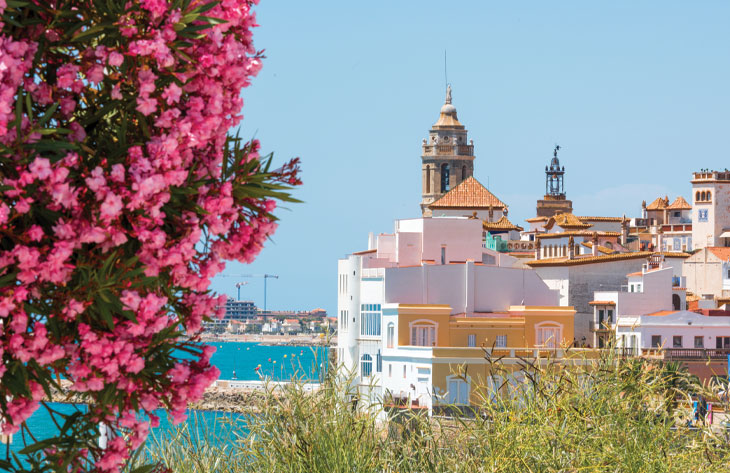
Vivero Beach Club Restaurant in Sitges, by the Playa San Sebastian, was exceptional. With views of the ocean and just a few minutes from the beach, you can enjoy exceptional seafood paella, pan Catalan and other delicious dishes and local wines. It’s an ideal location for a lazy, long lunch and then back to the beach for a swim and snooze under the shade of a parasol. You can rent sun beds and parasols very affordably on all the local beaches in both Sitges and Vilanova, meaning all you need to do is relax with cold drinks available from the beach bars – chiringuitos.
If you like sailing and water sports, both towns have marinas that offer day rentals, tours, and various activities; it is around a 10-minute drive in either location.

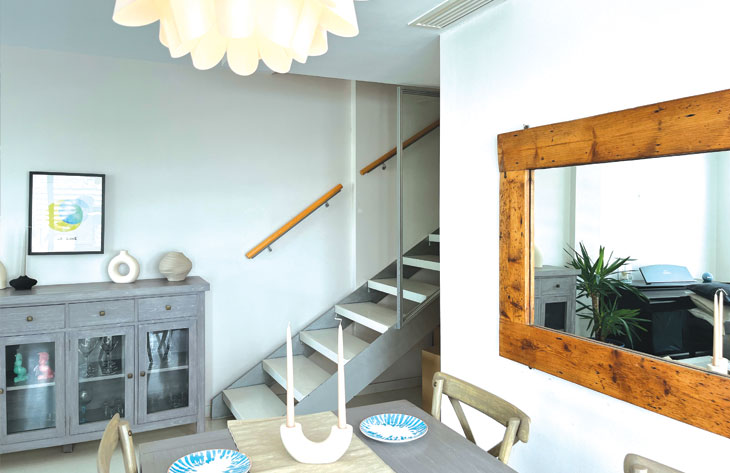
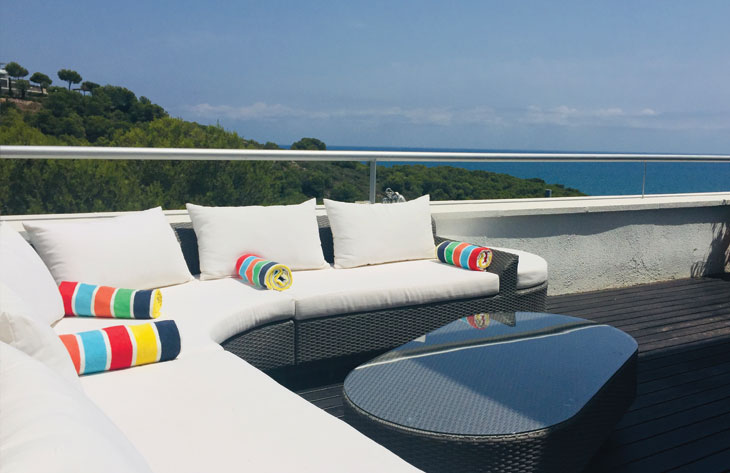
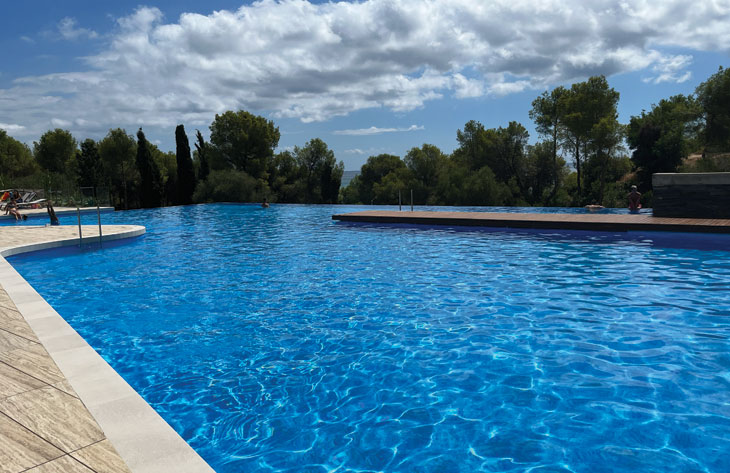

La Casa del Mar has an Instagram page that follows many of the local businesses and is a great resource or restaurant recommendations and places to visit. The area is famous for its vineyards, as the principal Cava region of Spain, and a tour of one of those is well recommended. Overall, the area is calm and tranquil but close enough to all the action of Sitges to dip in and out with both towns offering a diverse range of activities and leisure pursuits, restaurants and bars from high end to very affordable.
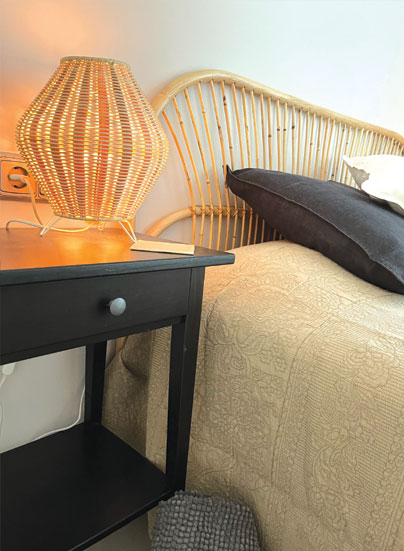

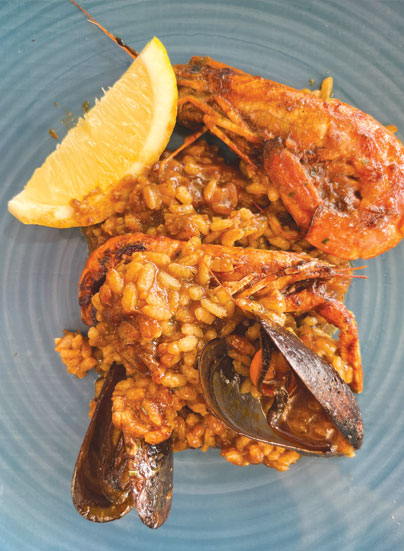
With regards to booking, the owner is very accommodating with respect to the duration of your stay and arrival time. There are neighbours on call in case we were stuck with anything, and we found the personal contact with the owner very friendly and reliable.
To get to the house and for ease getting out and about, I’d recommend a car. The house is 17 miles from Barcelona Airport, and a relaxed drive will have you there within 30 minutes. There is plenty
of public transport servicing the area, and there is good information on the property’s website for further information.
It was a great stay, and we cannot wait to return!
The details
Flights to Barcelona are available with EasyJet from London Luton, or from Stansted with Ryanair.
La Casa del Mar is available from €200 per night and sleeps six. There is a minimum booking window of one week during the high season of June to August.
• Find out more and book at lacasadelmarsitges.com
Recommend local dishes
• Bauma Carrat
Bauma Carrat is a Spanish cheese hailing from Borreda. The cheese is made from goats milk, and it’s usually left to ripen from 15 to 21 days. This aged fresh cheese has a black ash rind, and underneath it the texture is smooth, soft, and creamy with a distinct but not strong goat flavour.
• Sitges-style squid Calamars a la Sitgetana
Calamars a la Sitgetana is a traditional Catalan dish originating from Sitges. The dish is usually made with a combination of squid, olive oil, vegetable oil, onions, garlic, white wine, thyme, bay leaves, fennel seeds, fish stock, and parsley.
The squid is sliced into rings and tentacles and cooked in olive oil and vegetable oil. Once cooked, it is removed from the pan, and the onions and garlic are sautéed in the same oil. Thyme, bay leaves, fennel seeds, and wine are then added to the pan and brought to a boil. The dish is simmered until the squid is tender and the sauce has been reduced.
• Pollo y Capón del Prat
Traditionally raised in a small area southeast of Barcelona, chickens and capons of Catalonia’s native Prat breed are not only valued for their succulent meat but also for their good-sized eggs. Their diet consists of cereals, soy and sunflower cakes, rapeseed cakes, alfalfa meal, dairy products, and beet molasses. Only top quality, category A, fresh meat of the hardy and vigorous Prat chickens and capons can be marketed as such and is usually found in butcheries and poultry shops all
across Catalonia.
• Mongeta del Ganxet
Mongeta del Ganxet are the beans of the ganxet variety grown in the districts of Vallès Occidental, Vallès Oriental, El Maresme and La Selva. The tradition of cultivating and growing beans over generations produced this outstanding variety.
These beans are unique because of their very thin skin and exceptionally creamy texture. Mongeta del Ganxet are both easy and quick to cook, and light in texture. These beans are low in fat and high in protein.
• Nevat
Nevat is a Spanish soft-ripened cheese originating from Catalonia. It was created by Josep Cuixart in the village of Vilassar de Dalt. The cheese is made from goat milk of Murcia and Grenadine goats. Their milk is high in fat and retains the flavours of rosemary, olive, and thyme on which the goats feed.
The cheese has a bloomy rind that’s imprinted with the shape of a cloth in which the curds have been drained. Larger versions of the cheese are shaped into a peaked mountain, while smaller versions are shaped into small disks. When fully mature, the texture is soft and almost runny, while remaining slightly firm near the centre.
• Sarró de Cabra
Sarró de Cabra is a traditional Spanish cheese produced in Moia near Barcelona. It’s made from pasteurized goat milk and usually ages for two months. Sarró de Cabra is typically wrapped in a napkin that gives the cheese a distinctive shape.
Underneath its cloth-wrapped rind, the texture is semi-soft and buttery. The aromas are mildly sweet, while the flavours are strong, intense, tangy, and citrusy.
• Salchichón de Vic
Salchichón de Vic is a sausage produced in 28 towns, all of them located in the Vic Valley in the Spanish district of Osona. It is made with ground pork and bacon mixed with salt and black peppercorns. The sausage has a traditional white coating on the exterior, developed during the process of maturation which takes place in a controlled environment and lasts for at least 45 days.
Salchichón de Vic is best enjoyed as an appetiser, paired with homemade bread and local cheese. For the best experience, wash it all down with a glass of hearty wine.










